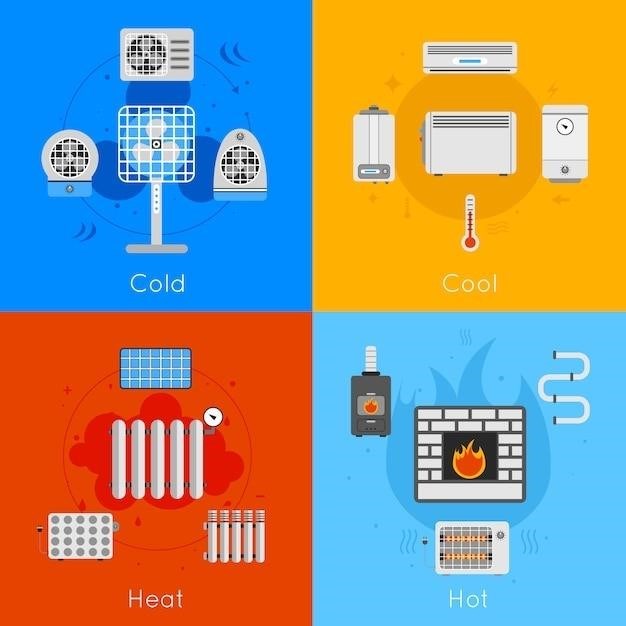Finding Free “We Wish You a Merry Christmas” Sheet Music
Finding free sheet music for “We Wish You a Merry Christmas” is surprisingly easy! There are a number of websites that offer free downloads of this classic carol in various arrangements. You can find versions for piano‚ guitar‚ flute‚ and even vocal arrangements. The key is knowing where to look.
Online Sheet Music Websites
The internet is a treasure trove of free sheet music resources. Many websites offer a vast library of music scores‚ including “We Wish You a Merry Christmas.” These websites typically feature a wide range of arrangements‚ from simple piano scores for beginners to complex orchestral arrangements for experienced musicians. You can often find sheet music for specific instruments‚ such as piano‚ guitar‚ flute‚ or even vocal arrangements. Additionally‚ many websites allow you to filter your search by skill level‚ making it easier to find music that’s appropriate for your abilities.
Some websites also offer additional features‚ such as the ability to print the sheet music‚ download it as a PDF‚ or even listen to a recording of the piece. These features can be incredibly helpful for learning a new piece of music or practicing a familiar one.
Free Sheet Music Websites
While many websites offer a mix of free and paid sheet music‚ there are dedicated platforms specifically designed to provide free music scores. These websites often rely on donations or advertising to support their operations‚ offering a vast collection of classical‚ contemporary‚ and even popular music‚ including “We Wish You a Merry Christmas.” You can usually find sheet music for various instruments‚ skill levels‚ and even different arrangements.
The beauty of these free sheet music websites lies in their accessibility. They allow anyone‚ regardless of their budget‚ to access and enjoy the joy of playing music. Whether you’re a seasoned musician or just starting your musical journey‚ these websites provide a valuable resource for discovering and exploring new pieces.
Specific Websites for “We Wish You a Merry Christmas”
Several websites specialize in providing sheet music for “We Wish You a Merry Christmas‚” offering various arrangements and versions to suit different skill levels and preferences. These websites often feature user-friendly interfaces‚ allowing you to easily browse through their collection and find the perfect version for your needs. You can often find versions for piano‚ guitar‚ flute‚ and vocal arrangements‚ ensuring that there’s something for everyone.
These websites often offer a variety of formats‚ including PDF downloads‚ MIDI files‚ and even interactive sheet music players. This flexibility ensures that you can access and use the sheet music in the way that best suits your learning style and preferences. Whether you prefer to print out the music‚ play it on your computer‚ or use it with a dedicated music software‚ these websites have you covered.
a. Virtualsheetmusic.com
Virtualsheetmusic.com is a popular destination for finding free sheet music‚ including “We Wish You a Merry Christmas.” The site offers a wide range of arrangements for piano‚ voice‚ and other instruments‚ making it a valuable resource for musicians of all skill levels. Whether you’re a beginner looking for a simple version or an experienced player seeking a more challenging arrangement‚ Virtualsheetmusic.com has something for you.
The website’s user-friendly interface makes it easy to navigate and find the specific arrangement you’re looking for. You can filter the results by instrument‚ skill level‚ and other criteria to narrow down your search. Once you’ve found the arrangement you want‚ you can download it in PDF format‚ ready to be printed or viewed on your computer.
b. Musescore.com
Musescore.com is another excellent resource for free sheet music‚ including “We Wish You a Merry Christmas.” This website is known for its large and active community of musicians‚ who contribute and share their arrangements. This means you’ll find a wide variety of versions‚ from traditional arrangements to more modern interpretations.
Musescore.com allows you to download sheet music in PDF format‚ but it also offers a unique feature⁚ the ability to view and interact with the music directly in your web browser. This can be helpful for exploring different arrangements and seeing how they are laid out before you commit to downloading them.
Beyond “We Wish You a Merry Christmas‚” Musescore.com boasts a vast library of free sheet music for all genres and skill levels. It’s a great place to discover new music and expand your repertoire.
c. Gmajormusictheory.org
Gmajormusictheory.org is a website dedicated to providing free sheet music for various instruments‚ including piano‚ guitar‚ and vocals. One of their featured pieces is “We Wish You a Merry Christmas‚” which is available in a range of keys to suit different skill levels. The website offers the sheet music in PDF format‚ making it easy to download and print for personal use.
Gmajormusictheory.org’s focus on music theory makes it a valuable resource for musicians of all levels. The website includes lessons‚ exercises‚ and explanations of music theory concepts‚ making it a great place to learn and improve your understanding of music. While the primary focus is on music theory‚ the website also provides a selection of free sheet music‚ making it a valuable resource for anyone looking for quality musical resources.

Whether you’re a beginner or a seasoned musician‚ Gmajormusictheory.org is a great place to find free sheet music and expand your musical knowledge.
Free Sheet Music Download Platforms
Once you’ve found a suitable “We Wish You a Merry Christmas” sheet music source‚ you’ll need to decide how you want to download it. Many websites offer free downloads in different formats‚ each with its own advantages.
Downloading sheet music in PDF format is a popular choice‚ as it allows you to easily print and use the music on any device. PDF files are also generally compatible with most music notation software‚ making it easy to edit and annotate the music.
MIDI files offer a different approach to sheet music. These files contain digital representations of musical notes and timing‚ making them suitable for use with music software and hardware. MIDI files can be played back on a computer or through a MIDI keyboard‚ providing a convenient way to practice and learn the music.
The choice between PDF and MIDI format depends on your individual needs and preferences. PDF files provide a traditional sheet music experience‚ while MIDI files offer a more digital and interactive approach.
a. PDF File Download
Downloading “We Wish You a Merry Christmas” sheet music in PDF format offers a familiar and convenient approach to accessing and utilizing the music. PDF files are widely compatible with various devices and operating systems‚ making them easily accessible for printing or viewing on a computer‚ tablet‚ or even a smartphone.
The ability to print PDF files is a major advantage for those who prefer physical sheet music. You can print the music on standard paper or even on specialized music paper‚ allowing you to customize the appearance and size of the sheet music to your liking.
Moreover‚ PDF files are highly versatile and can be easily shared with others. You can email the file‚ upload it to cloud storage‚ or even create a physical copy to share with friends‚ family‚ or fellow musicians. This makes it a convenient way to distribute and collaborate on musical arrangements.
b. MIDI File Download
MIDI (Musical Instrument Digital Interface) files offer a unique approach to accessing “We Wish You a Merry Christmas” sheet music. While they don’t provide a visual representation of the music like PDF files‚ MIDI files contain a digital representation of the musical notes‚ timing‚ and other performance instructions. This makes them ideal for use with music software and hardware‚ allowing for a more interactive and dynamic experience.
One of the primary advantages of MIDI files is their flexibility. You can easily adjust the tempo‚ key‚ and even the instrument sounds within the file using music software. This allows you to customize the music to your preference or to match a specific instrument or ensemble.
Furthermore‚ MIDI files can be used to create backing tracks or even generate full instrumental arrangements. This can be particularly helpful for musicians who are learning the song or for those who want to create a more elaborate performance. While they don’t provide a visual representation of the music‚ MIDI files offer a unique and versatile way to access and manipulate “We Wish You a Merry Christmas” sheet music‚ making them a valuable resource for both musicians and music enthusiasts.
Considerations for Choosing Sheet Music
Selecting the right “We Wish You a Merry Christmas” sheet music involves weighing several factors to ensure a satisfying musical experience. First‚ consider your skill level as a musician. Easy arrangements‚ often labeled “beginner” or “intermediate‚” offer simplified versions of the melody and chords‚ suitable for those starting their musical journey. More advanced arrangements‚ labeled “advanced” or “professional‚” may include complex harmonies‚ intricate rhythms‚ and challenging passages‚ perfect for experienced musicians seeking a greater challenge.
Next‚ consider the desired instrumentation. While piano arrangements are common‚ sheet music for various instruments like guitar‚ flute‚ violin‚ and even vocal ensembles is available. Finally‚ think about the arrangement style you prefer. Classical arrangements often feature a traditional‚ formal style‚ while contemporary arrangements might incorporate modern elements or incorporate instruments like synthesizers or drums.
By carefully considering these factors‚ you can choose “We Wish You a Merry Christmas” sheet music that aligns with your musical abilities‚ instrument‚ and desired style‚ ensuring a joyful and fulfilling musical experience during the holiday season.

a. Skill Level
Choosing the right “We Wish You a Merry Christmas” sheet music starts with assessing your skill level as a musician. If you’re a beginner‚ opt for easy arrangements labeled “beginner” or “intermediate.” These versions simplify the melody and chords‚ making them perfect for those starting their musical journey. They offer a comfortable learning experience‚ allowing you to grasp the basics of the carol without feeling overwhelmed;
For experienced musicians‚ advanced arrangements labeled “advanced” or “professional” provide a greater challenge. These versions feature intricate harmonies‚ complex rhythms‚ and challenging passages‚ perfect for those seeking a more demanding musical experience. They allow you to showcase your skills and explore the depth of this beloved Christmas carol.
By considering your skill level‚ you can choose sheet music that matches your abilities‚ ensuring a fulfilling and enjoyable musical experience. Whether you’re a beginner or a seasoned musician‚ “We Wish You a Merry Christmas” sheet music offers something for everyone.
b. Instrumentation
The instrumentation of your chosen “We Wish You a Merry Christmas” sheet music is crucial for a successful musical experience. Consider the instruments you play or have access to‚ as well as the overall sound you envision. A solo piano arrangement offers a classic and elegant rendition‚ ideal for a solo performance or a simple accompaniment.
If you’re looking for a more festive and lively sound‚ consider sheet music for guitar‚ flute‚ or even a full ensemble. Many free websites offer arrangements for various combinations of instruments‚ allowing you to choose the perfect ensemble for your needs. For example‚ a vocal arrangement with piano accompaniment is suitable for a choir or a small vocal group‚ while a guitar and vocal arrangement is perfect for a more intimate setting.
Remember to explore the different instrumentation options available to find the perfect match for your musical preferences and the intended performance setting. From solo instruments to full ensembles‚ “We Wish You a Merry Christmas” sheet music offers a wide range of instrumentation choices‚ ensuring a truly personalized musical experience.
c. Arrangement Style
The arrangement style of “We Wish You a Merry Christmas” sheet music plays a significant role in shaping the overall musical experience. From traditional renditions to modern interpretations‚ the arrangement can significantly impact the mood and feel of the piece. Traditional arrangements often feature a simple melody and basic harmonies‚ making them ideal for beginners or those seeking a classic sound.
Modern arrangements may incorporate more complex harmonies‚ intricate melodies‚ and even instrumental solos‚ creating a more dynamic and contemporary feel. Consider your musical taste and the intended audience when choosing an arrangement style. For a more intimate setting‚ a simple and elegant piano arrangement might be appropriate‚ while a full orchestral arrangement would be more fitting for a grand performance.
Ultimately‚ the arrangement style is a matter of personal preference‚ so explore the diverse options available and choose the one that resonates best with your musical vision. From traditional to contemporary‚ the world of “We Wish You a Merry Christmas” sheet music offers a wide range of arrangement styles‚ catering to every musical taste and performance setting.
Additional Resources for Finding Sheet Music
Beyond the specific websites mentioned earlier‚ several additional resources can help you find free “We Wish You a Merry Christmas” sheet music. Online forums and communities dedicated to music are excellent places to connect with fellow musicians and share resources. Many forums have dedicated sections for sharing sheet music‚ where you can find arrangements for various instruments and skill levels.
Local music stores or libraries often have collections of free sheet music‚ including Christmas carols. Don’t hesitate to ask the staff for assistance in locating the specific piece you’re looking for. Finally‚ consider checking online marketplaces like eBay or Etsy‚ where individuals often sell digital copies of sheet music at affordable prices.
Remember‚ finding free “We Wish You a Merry Christmas” sheet music is just the first step. Practice and dedication are essential for mastering the piece and bringing it to life. With a little effort and the right resources‚ you can easily find free sheet music and fill your home with the festive sounds of this beloved Christmas carol.
























